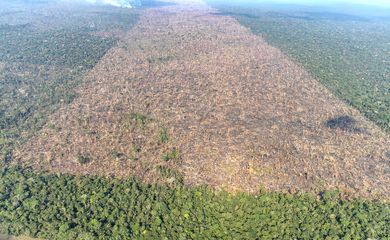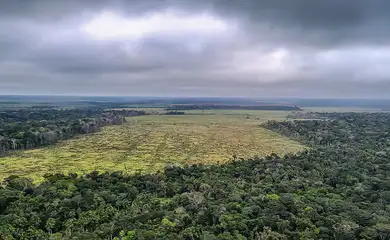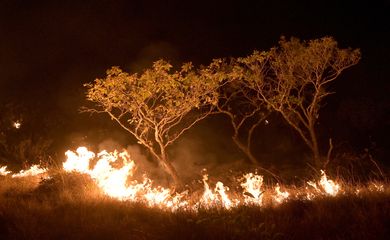Forest degradation in Amazon hits record high in September

Forest degradation in the Legal Amazon spanned 20,238 square kilometers (km²) in September 2024, marking a staggering 1,402 percent increase compared to the 1,347 km² recorded in September 2023.

The Imazon research institute reported that this was the largest area impacted by environmental damage in a single month over the past 15 years. Environmental degradation refers to the deterioration of the environment, driven by both human activities and natural events.
Data on deforestation and forest degradation in the Amazon has been monitored by Imazon through the Deforestation Alert System (SAD) using satellite images since 2008 and 2009, respectively.
Deforestation refers to the complete removal of the forest, while degradation involves damage caused by activities like burning or logging, which do not fully clear the vegetation but still destroy significant portions of it. Both processes, according to the organization, pose serious threats to the region's flora and fauna species.
"September typically sees a rise in these activities in the Amazon due to the drier conditions. However, the figures recorded in 2024 are significantly higher than in previous years. Most of the alerts this year are attributed to an intensification of forest fires," stated Imazon researcher Larissa Amorim.
She expressed concern about the alarming spike in degradation, noting that key rivers in the Amazon are in critical condition. Imazon attributes the findings of the survey to an increase in fires caused by human activity, exacerbated by the severe drought affecting the region.
Degradation
This September marked the fourth consecutive month of rising degraded areas, contributing to an accumulated total of 26,246 km² since January—the highest in the last 15 years. In comparison, the previous record for this period was set in 2022, with degradation reaching 6,869 km².
"Historically, Mato Grosso has been the leading state for Amazon degradation during September. However, in 2024, Pará has surprised us with exceptionally high figures. In response, an emergency situation was declared, and the use of fire was banned. Nonetheless, we need this decision to be enforced with proper oversight and accountability for those responsible to ensure its effectiveness," stated Carlos Souza Jr., coordinator of Imazon's Amazon Monitoring program.
Deforestation
Deforestation in the Amazon rose in September this year, marking the fourth consecutive month of increases after 14 months of decline in the region. In total, 547 km² of forest was cleared, representing a 0.2 percent increase compared to 2023.
From January to September, the deforested area reached 3,071 km², making it the eighth largest total recorded in the historical series.
In September this year, the majority of deforestation occurred in private areas or lands with varying degrees of ownership, accounting for 61 percent of the total. The remainder was recorded in settlements (30%), conservation units (7%), and indigenous lands (2%).
Among the nine states that comprise the Legal Amazon, three accounted for 83 percent of the total deforestation identified in September. Pará topped the list with 52 percent of the deforestation, followed by Amazonas at 16 percent and Acre at 15 percent. Notably, seven of the ten municipalities with the highest deforestation rates are located in Pará.
Settlements
Pará also contains seven of the ten settlements and seven of the ten conservation units with the largest deforested areas. Among the ten most deforested indigenous lands, three are entirely within Pará, while another three have portions of their area in the state.
"All of this impact is felt in municipalities, settlements, conservation units, and indigenous lands. Therefore, it is urgent to invest in effective, integrated actions to protect the region, including funding for environmental oversight agencies," said Carlos Souza.




